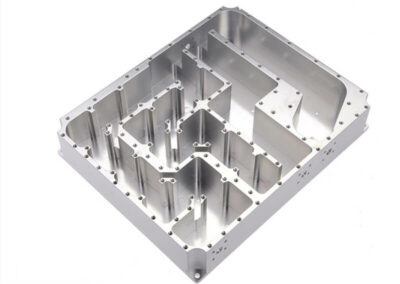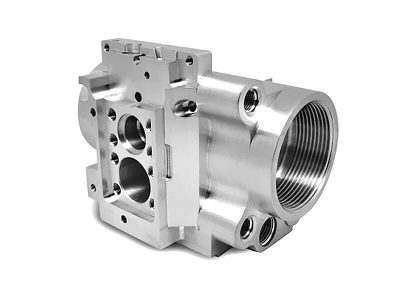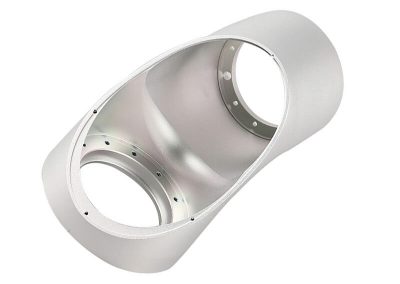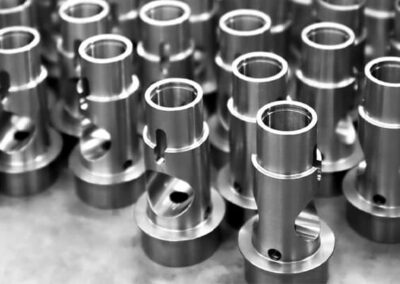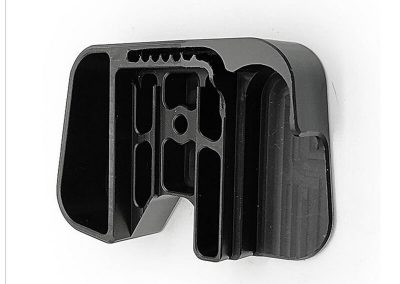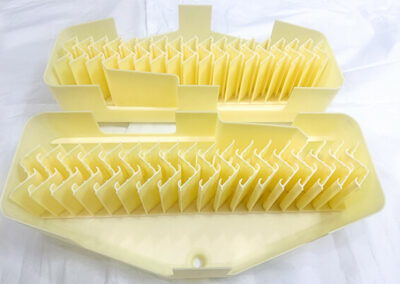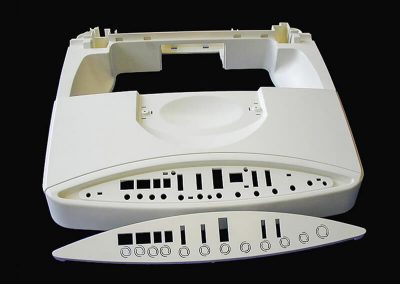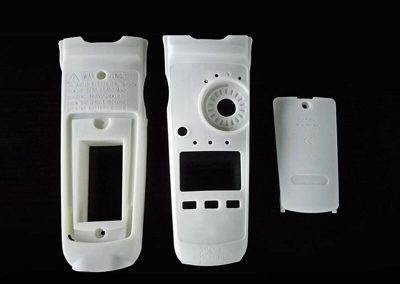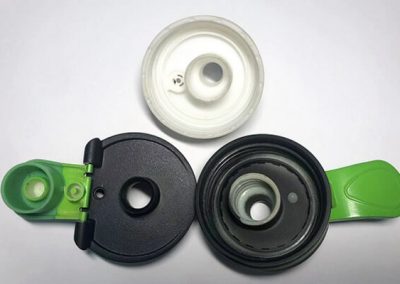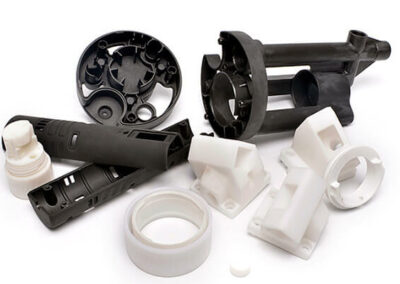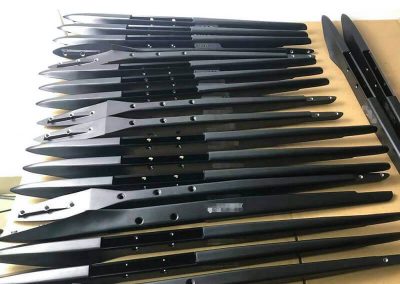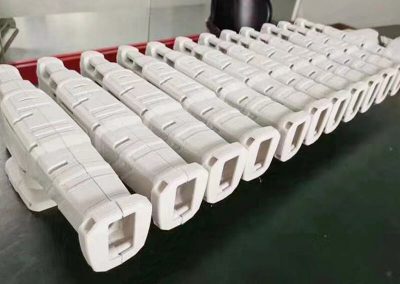CNC Milling: How To Get High-Quality Parts By CNC Milling?
CNC milling technology has versatility, precision, and efficiency continued to push the manufacturing industry across various sectors, enabling the production of intricate and high-quality parts and products. It involves using computer-aided design (CAD) software to build, revise, and prepare your products before transferring them to a CNC milling machine. All types of materials can be sliced by these machines. These materials comprise rubber, metal, plastic, and other materials.
At Sungplastic, you can start your projects of rapid prototyping or low volume manufacturing through CNC machining solutions.
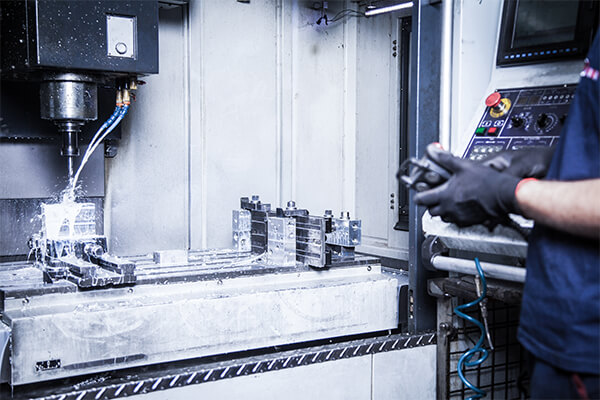
What is CNC Milling?
CNC milling is a manufacturing process that utilizes a rotating spindle with a cutting tool to selectively remove material from a raw substrate block. The workpiece is firmly secured to a table, which moves or rotates on different planes to enable the tool to operate at various angles. Advanced CNC milling machines often have five or more axes of independent motion, allowing for the production of complex shapes without the need for transferring the workpiece to another machine.
Types of Cutting Tools Used in CNC Milling
CNC milling machines utilize different types of cutting tools to perform various machining operations. The selection of the cutting tool depends on factors such as the material being machined, the desired shape or feature, and the required precision.
Some common types of cutting tools used in CNC milling include:
-
- End Mills
End mills are versatile cutting tools with a cutting edge on the end and the periphery. They can be used for a wide range of milling operations, including facing, slotting, profiling, and contouring. - Ball Nose End Mills
Ball nose end mills have a rounded end, making them suitable for 3D contouring and sculpting applications. They are often used to create smooth curves and intricate details. - Face Mills
Face mills have cutting edges on the face and periphery. They are primarily used for facing large surfaces and producing flat finishes. - Drills
Drills are used to create holes in the workpiece. CNC milling machines can perform drilling operations by using specialized drill bits. - Reamers
Reamers are used to enlarge and improve the accuracy of existing holes. They produce a smooth and precise finish. - Taps
Taps are used for threading operations, creating internal threads in holes.
- End Mills
There are numerous other specialized tools available for specific applications, such as chamfer mills, countersinks, and thread mills. The selection of the appropriate cutting tool is crucial to achieve the desired machining outcome.
Components and Operation of a CNC Milling Machines
A CNC milling machine consists of several key components that work together to carry out precise and automated machining operations. These components include:
-
- Control Panel
The control panel houses the computer and control system that operates the CNC milling machine. It allows the operator to input commands, select programs, and monitor the machining process. - Spindle
The spindle is the rotating shaft that holds the cutting tool. It is driven by a motor and can rotate at high speeds, allowing for the precise cutting and shaping of the workpiece. - Tooling System
The tooling system comprises various holders and adapters that securely hold different cutting tools. It allows for quick and efficient tool changes during the machining process. - Worktable
The worktable provides a stable platform for securing the workpiece. It can move in multiple axes, such as the X, Y, and Z axes, to position the workpiece accurately and enable the cutting tool to operate in different directions. - Guideways
Guideways are linear motion systems that guide the movement of the worktable and cutting tool along the axes. They ensure smooth and precise motion during the machining process. - Drive System
The drive system consists of motors and mechanical components that translate the commands from the control system into actual movement of the spindle, worktable, and other machine components.
- Control Panel
During operation, the CNC milling machine follows a programmed set of instructions to carry out the machining process. The control system reads the program, interprets the commands, and sends signals to the motors and other components to move the cutting tool and workpiece accordingly. This precise control allows for the creation of complex shapes, accurate dimensions, and smooth surface finishes.
What are The Motion Axes on a Typical CNC Milling Machine?
The motion axes on a CNC milling machine are based on an X-Y-Z coordinate system. When describing the basic movements of the mill, machinists refer to this system, with the operator facing the machine. A standard CNC mill typically has three axes. The Z-axis represents the up-and-down movement of the milling spindle. The X-axis corresponds to the left-to-right motion, while the Y-axis refers to the front-to-back motion.
What are The Advantages of Computer Numeric Control (CNC) for CNC Milling?
CNC milling relies on Computer Numeric Control, which is a computer program derived from a 3D digital file of the desired finished part. In contrast to earlier systems that used punch cards or magnetic tapes, CNC control systems are fast, accurate, and easily modifiable in real time. This allows for precise adjustments and fine-tuning of the machining program, resulting in optimal CNC milling outcomes.
What are The Benefits of Automatic Tool Changers for CNC Milling Machines?
Manufacturing a finished part from a block of material requires the use of multiple specialized tools, each performing a specific CNC machining function. Manually changing these tools one by one would be time-consuming and inefficient. To address this, CNC milling machines are equipped with rotating carousels that hold all the necessary tools on separate holders. These tools can be automatically exchanged on the spindle within seconds when needed. This automated tool-changing capability ensures that all conventional CNC milling operations can be performed in a single setup, enhancing efficiency and productivity.
The Importance of Workpiece Holding for CNC Machining Centers
In CNC machining centers, the workpiece is securely mounted in a fixed position on a work table while the tool moves around it. This differs from CNC turning on a lathe, where the workpiece rotates while the tool remains stationary. Due to this fundamental difference in motion, different methods are employed to hold parts in place on these two machines. While simple rectangular shapes can be held using a machinist’s vice or by clamping them to the table’s surface, more complex or unusual shapes may require custom holding fixtures. Designing and implementing such fixtures can add complexity and time to a CNC machining project.
Applications of CNC Milling
CNC milling has found widespread applications across various industries, revolutionizing the way complex parts and components are manufactured. Here are some of the key industries and applications where CNC milling plays a crucial role:
- Aerospace and Aviation
CNC milling is extensively used in the aerospace industry for manufacturing critical components such as turbine blades, engine parts, structural elements, and aircraft interiors. The precision and repeatability offered by CNC milling ensure the production of high-performance, lightweight parts that meet stringent quality standards. - Automotive Manufacturing
In the automotive industry, CNC milling is employed for the production of engine blocks, transmission components, chassis parts, and intricate molds for vehicle body panels. CNC milling enables automakers to achieve precise tolerances, intricate geometries, and efficient mass production. - Medical and Healthcare
CNC milling is vital in the medical field for manufacturing surgical instruments, prosthetic devices, orthopedic implants, dental components, and medical equipment. The ability to create complex and customized designs with high accuracy makes CNC milling instrumental in improving patient care and treatment outcomes. - Electronics and Semiconductor Manufacturing
CNC milling is used in the production of electronic components, circuit boards, connectors, and enclosures. The precise milling capabilities ensure proper fit, alignment, and functionality of these intricate parts critical to the electronics and semiconductor industries. - Mold and Die Making
CNC milling is extensively employed in mold and die making industries to create precise molds and dies used in injection molding, die casting, and stamping processes. CNC milling machines enable the production of complex cavity geometries with high accuracy and surface finish, resulting in efficient and reliable production processes. - Architecture and Prototyping
Architects and designers utilize CNC milling for creating intricate architectural models, prototypes, and scale replicas. CNC milling allows them to translate their designs into physical objects with precision, enabling visualization, testing, and validation of ideas before actual construction. - Defense and Military
CNC milling is a critical technology in the defense and military sectors for the production of weapon systems, components, and specialized equipment. It ensures the manufacturing of highly precise and durable parts that meet stringent military standards and requirements. - Energy and Power Generation
CNC milling is employed in the energy sector for manufacturing turbine components, generator parts, and other critical components used in power generation systems. The high precision and reliability of CNC milling support the efficient and safe operation of power plants. - Furniture and Woodworking
CNC milling machines are utilized in the furniture and woodworking industries for creating intricate designs, engravings, and joinery. It enables the production of custom-made furniture, cabinetry, decorative elements, and architectural woodwork with high precision and efficiency. - Art and Sculpture
CNC milling has also made its way into the world of art and sculpture, allowing artists to bring their creative visions to life with precision and intricacy. It enables the creation of complex and detailed sculptures, art installations, and decorative pieces that were once limited to traditional sculpting techniques.
How Does CNC Milling Help in Achieving High-Quality Parts?
Symmetrical parts that are primarily round or radial are best suited for machining on a CNC turning center, as it offers maximum efficiency and precision. However, most parts encountered in CNC machining are not round or symmetrical, requiring milling operations. Multi-axis mills excel at creating square shapes, bevels, angles, slots, and intricate curves. Essentially, any subtractive machining process, including the creation of round shapes, can be accomplished on a mill. CNC mills also offer exceptional accuracy, regularly achieving tolerances as tight as 0.01mm or 10 microns. With a wide variety of stock materials and comprehensive incoming material inspection and testing services, we ensure the production of great parts for any application.
Have a look at our works of CNC machining:
If you have any questions, please consult with us.
Get a free quote and design analysis today.
We’ll reply to you within 6 working hours.
We respect your privacy.
+86 139 2927 4777 (WhatsApp, Wechat)

